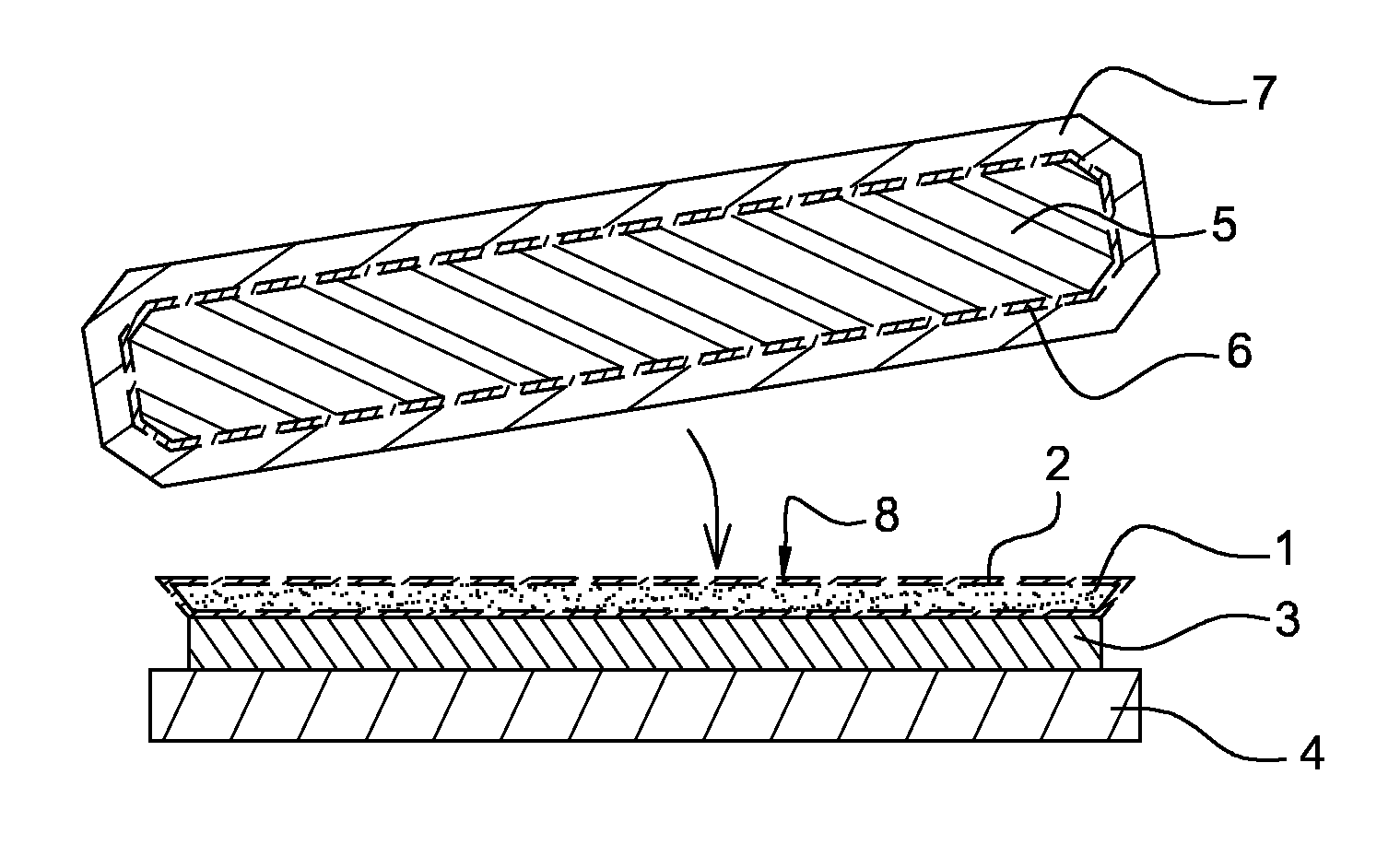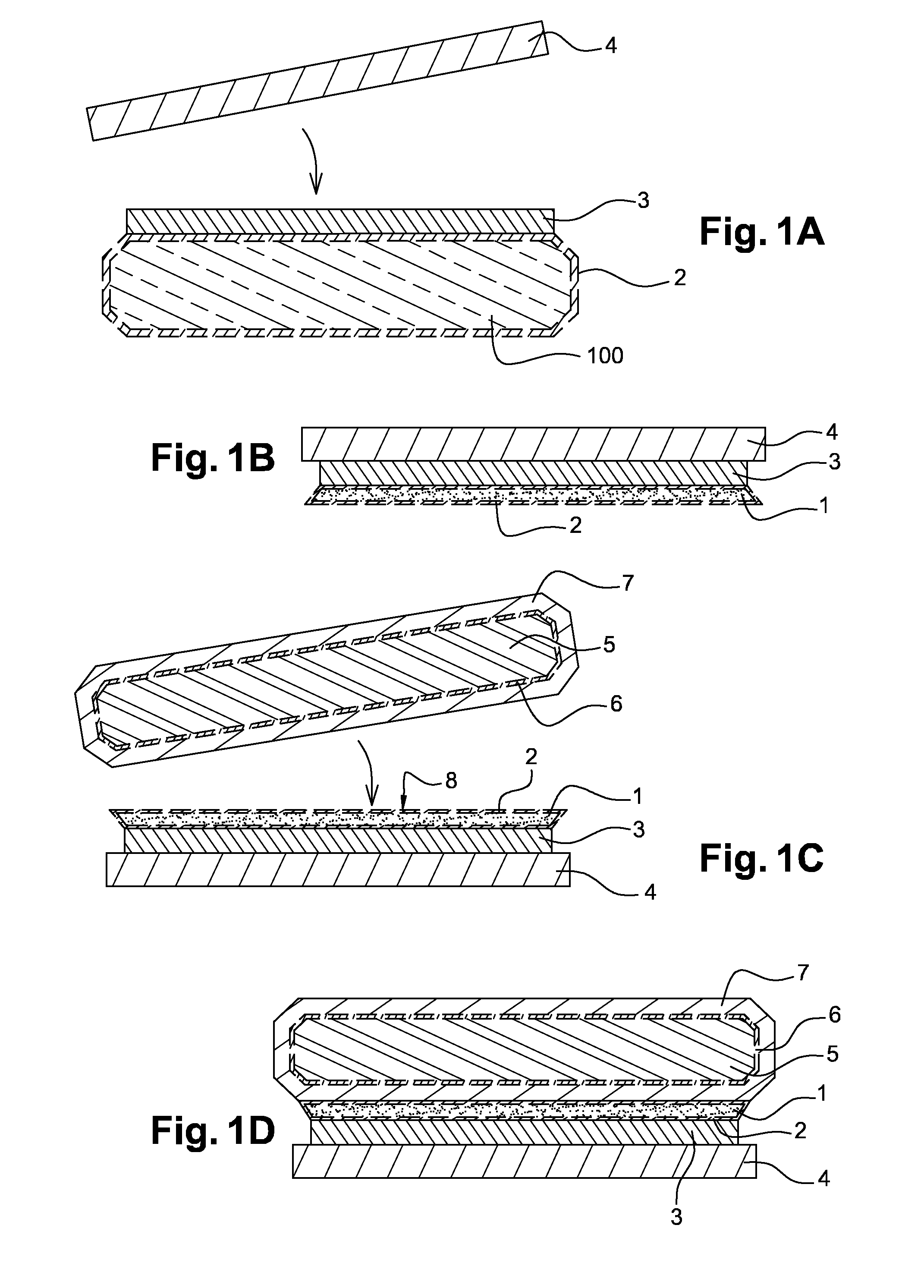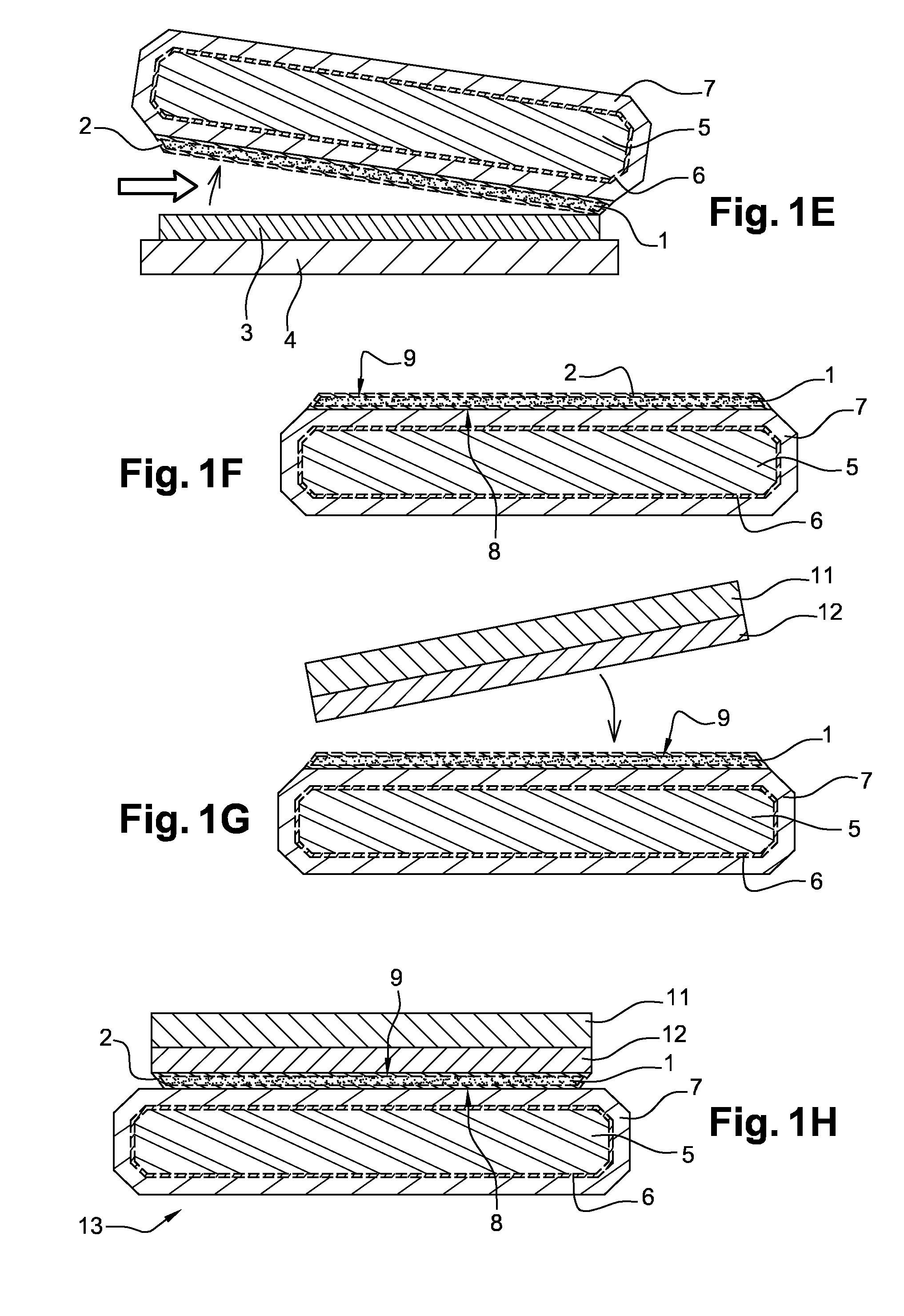Double layer transfer method
a transfer method and layer technology, applied in the field of double layer transfer method, can solve the problems of limiting the number of possible technologies, unable to find an intermediate bonding with a stronger binding energy, and unable to use the same bonding method for the initial substrate bonding (first step), so as to facilitate the debonding of the layer
- Summary
- Abstract
- Description
- Claims
- Application Information
AI Technical Summary
Benefits of technology
Problems solved by technology
Method used
Image
Examples
Embodiment Construction
[0061]With reference to FIG. 1A, the method is implemented based on a silicon donor substrate 100 with a thickness of around 725 micrometers from which the layer 1 to be transferred will be prepared. Such a substrate 100 typically has fallen edges at the periphery of its surface that are made according to the SEMI standards. These fallen edges facilitate the handling of the substrate which would otherwise flake away and create particles at the surface, liable to hinder a subsequent bonding. A native oxide layer 2 is formed on the surface of the substrate 100 when in contact with air. An adhesive film 3 made of DVS-bis-BCB polymer is deposited on the silicon substrate 100, with a thickness of 10 micrometers by centrifugal coating or spin coating, a method well known by the skilled person. The DVS-bis-BCB film 3 is then cross-linked by applying a thermal treatment at 250° C. for 1 hour. A polymer substrate 4, for example a polyimide such as “Kapton®”, having a thickness higher than 50...
PUM
 Login to View More
Login to View More Abstract
Description
Claims
Application Information
 Login to View More
Login to View More - R&D
- Intellectual Property
- Life Sciences
- Materials
- Tech Scout
- Unparalleled Data Quality
- Higher Quality Content
- 60% Fewer Hallucinations
Browse by: Latest US Patents, China's latest patents, Technical Efficacy Thesaurus, Application Domain, Technology Topic, Popular Technical Reports.
© 2025 PatSnap. All rights reserved.Legal|Privacy policy|Modern Slavery Act Transparency Statement|Sitemap|About US| Contact US: help@patsnap.com



